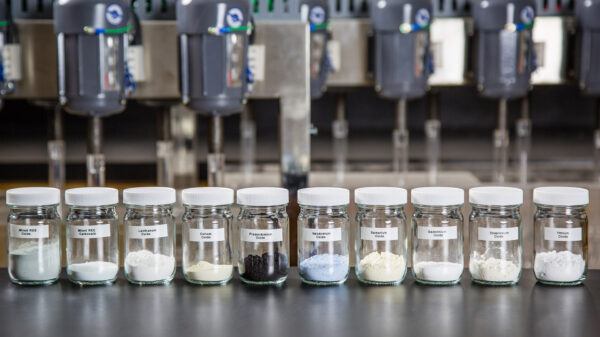Global central banks have picked up on buying gold in May compared to other months, according to a new report from the World Gold Council (WGC).
Central banks bought only 20 tonnes of gold, which dips under the 12-month average of 27 tonnes but still maintains a steady rate that’s been going on for years.
Despite this, fresh tensions in the Middle East have reinforced gold’s strategic appeal for central banks seeking protection from geopolitical shocks. The WGC’s recently released Central Bank Gold Reserves Survey 2025 also highlights this ongoing interest.
Central banks worldwide continue to focus on gold, with 95 per cent of respondents expecting official reserves to grow. This marks an increase from 81 per cent last year. Additionally, a record 43 per cent of central bankers said they expect their own gold holdings to rise over the next 12 months.
In May, several central banks reported changes of 1 tonne or more to their gold reserves. The National Bank of Kazakhstan added 7 tonnes, raising its total to 299 tonnes. Since January, Kazakhstan has increased its reserves by 15 tonnes. The Central Bank of Turkey also purchased 6 tonnes in May, bringing its year-to-date total to 15 tonnes. The National Bank of Poland added 6 tonnes as well and remains 2025’s largest net gold buyer with a total of 67 tonnes.
Additionally, both the People’s Bank of China and the Czech National Bank reported increases of 2 tonnes each. Three other central banks—the National Bank of the Kyrgyz Republic, the National Bank of Cambodia, and the Central Bank of the Philippines—each added 1 tonne.
Read more: Promising antimony find in Nevada strongly positions NevGold Corp in minerals race
Read more: NevGold’s long intervals of antimony & gold mineralization turn heads
Central Banks have purchased over 1,000 tonnes per year
On the sales side, the Monetary Authority of Singapore led with a sale of 5 tonnes. The Central Bank of the Republic of Uzbekistan and the Deutsche Bundesbank each sold 1 tonne. Year to date, Uzbekistan remains the largest net seller with 27 tonnes, followed by Singapore with 10 tonnes.
Updated data for April 2025 also revealed that the Qatar Central Bank purchased 2 tonnes of gold. This brought global net gold purchases for April to 16 tonnes.
The recently released Central Bank Gold Reserves Survey 2025 reinforces gold’s continued relevance among central bankers worldwide. A record 73 central banks participated in this year’s survey, reflecting growing engagement and sustained interest in gold as a strategic reserve asset. Over the past three years, central banks have purchased more than 1,000 tonnes of gold annually. This marks a sharp increase from the 400 to 500 tonnes per year seen during the previous decade.
Additionally, sentiment around gold remains highly optimistic. Ninety-five per cent of respondents expect global central-bank gold reserves to rise over the next 12 months. A record 43 per cent also anticipate increasing their own gold holdings, up from 29 per cent in 2024. Central banks in emerging and developing economies show stronger intent to buy than those in advanced markets.
Furthermore, many central banks foresee a structural shift in their reserve portfolios. Seventy-six per cent believe gold will make up a moderately or significantly higher share of total reserves within five years, rising from 69 per cent last year. Meanwhile, 73 per cent expect the share of US dollar reserves to decline during the same period.
Read more: NevGold closes its Nutmeg Mountain acquisition with Goldmining for $3 million
Read more: NevGold’s long intervals of antimony & gold mineralization turn heads
Rising central bank demand creates positive downstream effects
Rising central bank demand for gold continues to create downstream effects for exploration and development companies like NevGold Corp (CVE: NAU) (OTCMKTS: NAUFF) (FRA: 5E50), as well as established producers such as Newmont Corporation (TSE: NGT) (NYSE: NEM).
As official sector purchases increase, market sentiment toward gold remains strong, reinforcing bullish price expectations. This benefits junior companies like Nevgold, which seek to attract capital for early-stage exploration. Higher gold prices can improve project economics and help justify advancing properties toward development.
Additionally, larger producers like Newmont stand to gain from increased profitability across their existing asset base. Strong demand can also encourage further investment in mergers, acquisitions, and brownfield expansion. Governments often view gold mining as a strategic asset when central reserves are rising.
Conversely, supply chain and permitting challenges may intensify if more companies rush to capitalize on gold’s momentum. Higher input costs and competition for skilled labour could pressure margins despite favourable pricing. Nevertheless, the broader trend remains supportive. Central bank accumulation not only stabilizes long-term demand but also signals confidence in gold’s enduring role as a reserve asset, providing tailwinds across the sector.
.
NevGold Corp is a sponsor of Mugglehead news coverage
.














